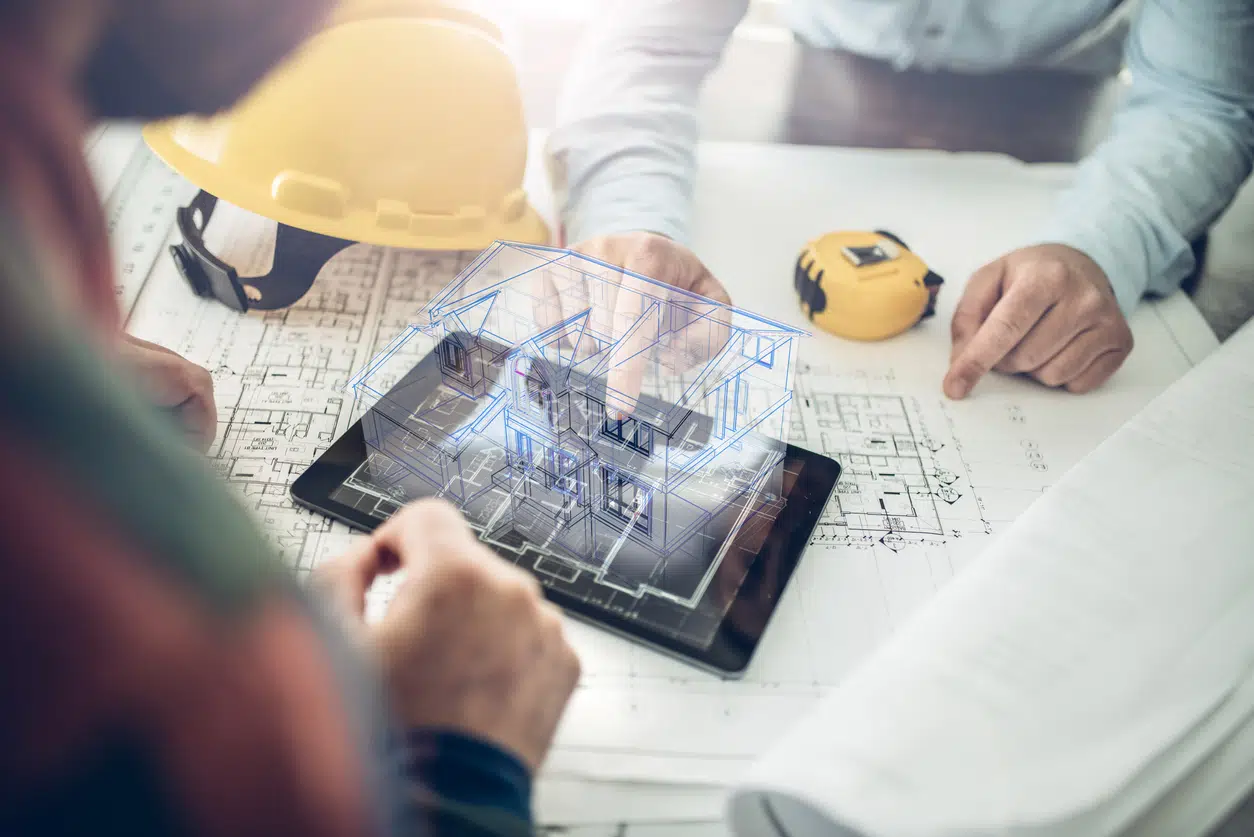The architectural world hit the global NFT headlines back in 2021 when a virtual real estate property sold for over half a million dollars. The insane amounts paid for an architectural rendering signalled the entry of cryptocurrencies into mainstream architecture. Previously a mainstay of digital art, here’s a look at what the arrival of NFTs means to construction design.
What is an NFT, and What’s the Deal With It?
Non-fungible tokens—or NFTs, are unique digital files that store ownership information. Non-fungible means that it’s one-of-a-kind. Users cannot change or replace them for something else. For example, a 20 dollar bill is fungible because you can exchange it with two 10 dollar bills.
Most people know of cryptocurrencies like Bitcoin and Ethereum, which continue to make waves in the financial markets. However, people have little information about blockchain technology, the infrastructure behind many digital currencies. A blockchain is a distributed ledger of transactions shared across computer networks.
Blockchains record every transaction in a ledger, which no one can alter despite the maintenance from multiple participants. The distributed database guarantees information consistency and security using hash encryption for every transaction. Any tampering along the chain will be detected, as the original transaction data is still contained within the blockchain.
NFTs build on blockchain technology to store origination information. NFTs can be created from anything as long as they are in digital forms, like when Jack Dorsey sold his first tweet in 2006 for more than two million dollars. However, much of the current hype revolves around selling digital art.
Here are some speculations about how design and architecture can use NFTs.
Blockchain Contracts
The distributed ledger system makes it easy to track project workflows and the movement of goods and services. People can trace and eliminate changes or delays along the blockchain, reducing the time spent on oversight.
Blockchain technology lays the groundwork for smart contracts. A smart contract is a self-executing digital agreement between two parties. The contract contains predefined conditions that parties need to meet before it executes and moves to the next stage.
For example, a typical construction contract will stipulate that if supplied goods have passed inspection, the system triggers payment from a virtual wallet. Smart contracts eliminate unnecessary paperwork and streamline dispute resolution between contractors and project owners.
Events can also be triggered by signing off on completed tasks in a project, after which the relevant activities begin. Smart contracts will also cut transactional costs, for example, paying third parties to audit or verify a transaction. People can save an unchangeable digital replica of the building within the blockchain to ensure that nothing runs out of scope.
The distributed nature of the contracts holds the parties accountable, or it remains unfulfilled.

Virtual Land
The concept of paying real money for virtual land might seem a bit far-fetched. However, it is already happening, and the prices are soaring. NFT virtual land essentially means that you own a piece of real estate in the metaverse. The landowner can use their online plots for advertising and hosting online events like gaming.
The metaverse is a collective term for virtual technologies. Some of these virtual worlds consist of idealistic versions of the physical world. We’ve already seen augmented reality technologies that allow you to walk into a mall, try on some clothes, buy anything you like, and waltz into a restaurant next door to grab a drink.
Virtual worlds allow you to create digital personas using 3D avatars that you can take with you anywhere. With NFT virtual lands, developers create vast tracts of digital land and subdivide them for sale. When buying these parcels, you essentially take ownership of a non-fungible token linked to that particular plot.
Owning digital land carries aspects of the physical world, like renting out a venue for concerts and product launches. You can purchase plots directly from the project developers or through subsequent owners.
Digital Blueprints for Sale
Most people involved in building and construction already know what blueprints are. The document’s name came from the original production process, where the use of chemicals on detailed architectural drawings produces a blue sheet of paper. Modern architects do their designs on a computer and print them on white sheets.
Blueprints can be for an existing structure or a planned project. They help to keep everyone on the same page during the construction process. Because they show precisely what the finished building is supposed to look like, they can be used to prepare the bill of materials, estimate the labour costs, and prepare a construction schedule.
Blueprints can become inscribed into blockchain contracts as a way of ensuring that all parties, including the contractor, construction workers, and the building owner, meet their end of the bargain. It won’t be long before we start seeing blueprints of historic buildings on the NFT market. Architects are following these developments, and many won’t hesitate to put their unique designs on sale.
Knowing how precious these documents are, you need a drawing management system to secure them, and DCM’s drawing management system is the perfect solution.
Masterpiece 3D Renderings
The first NFT marketplace for architects and designers launched in late 2021. It undoubtedly marked the beginning of the new frontier for the industry, even though some professionals had already had phenomenal sales using the technology. Many designers and 3D artists have jumped headlong onto the augmented reality bandwagon, bringing their ideas to life using digital simulations.
Augmented reality (AR) is an interactive 3D experience that produces versions of the real world using computer-generated elements. AR users can view AR environments from smartphones and computer screens, but the most immersive experience is through special AR goggles. Perhaps we need to distinguish between AR and virtual reality (VR) in that VR elements can be entirely fictitious, while AR uses components that you can find in real life.
AR gives a strong case for the growth of 3D NFTs. Architectural designs already started using them intensively. It moves the designer’s work from a mere presentation into a work of art capable of fetching dollars in the hundreds of thousands on the NFT market. Architects can move design concepts that haven’t been actualized because of impossible technologies, granting users a glimpse of what life could be like in the future.
Start Securing Your Blueprints With a Modernized Engineering Drawing Library
NFTs can be easy to crack when you already have an extensive digital library of architectural blueprints and designs. DCM’s echo | Drawing Management System 6.3 allows you to organize your drawing and collaborate with team members and contractors from anywhere.
Contact us today and discover how to build a drawing library that sets you up for success.
